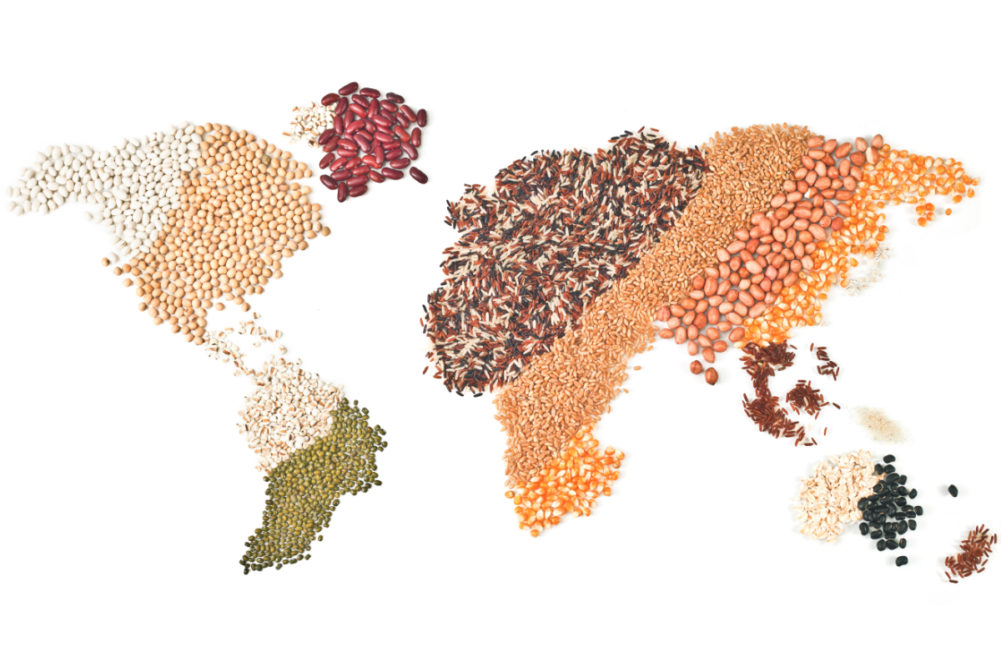LONDON — Global grains production and trade are forecast to reach record highs in 2020-21, according to the International Grains Council’s (IGC) latest monthly grain market report, released June 25.
The IGC projects totals grains production in 2020-21 to increase by 62 million tonnes from the previous year, led by a 55-million-tonne increase in corn output and a 6-million-tonne jump in wheat production, both of which would be record highs if realized.
While consumption prospects are somewhat uncertain for the coming marketing year, the IGC said “all components of demand are assumed to rise, taking total use to fresh high of 2.218 billion tonnes.”
“As projected supplies are more than ample to meet anticipated demand, the first build-up of global stocks in four years is expected, placed 20 million tonnes higher year-on-year at 635 million tonnes,” the IGC said. “This includes increases for wheat and barley, but a fourth successive depletion of corn inventories, to a seven-year low.”
The soybean sector is projected by the IGC to see gains in production and trade in 2020-21. A nominal increase for Brazil lifts the projection for global output by 8% to a record 364 million tonnes.
Given assumed firm import demand from China, world soybean trade is placed at a peak of 160 million tonnes, up 1% month-on-month and up 5 million tonnes from 2019-20.
The IGC noted that although Brazil set a record in soybean production in 2019-20, global output fell by 7% on a significantly reduced US harvest, with declines also in Argentina, Canada, India and Ukraine.
Wheat production is projected to build on this year’s record crop of 762 million tonnes, rising to 768 million in 2020-21, while trade is forecast to dip to 180 million tonnes from this year’s record of 181 million tonnes.
Wheat consumption in 2020-21 is projected to edge fractionally higher to 751 million tonnes.
“Food usage is expected to rise at close to the long-term pace but feeding of wheat is seen dropping to a seven-season low owing to greater supplies of alternatives, especially maize,” the IGC said. “However, while foodservice sectors are reopening in many countries, the outlook for overall use remains uncertain because of the potential for further coronavirus-related disruptions in the year ahead as well as a weak economic outlook, which could curb demand growth.”
The IGC forecasts wheat ending stocks to increase 6% from 2019-20 to a record 290 million tonnes.
Led by the United States rebounding from its poor 2019-20 crop, global corn production is forecast to increase by 5% to 1.172 billion tonnes in 2020-21, the IGC said. The Council also foresees a 3% increase in consumption (1.175 billion tonnes) and trade (175 million tonnes), with closing stocks falling by 1% to 296 million tonnes.
“After dipping in the prior year, global corn consumption is expected to rebound in 2020-21,” the IGC said. “However, with reports of resurging COVID-19 cases in some countries prompting more recent worries about possible new lockdown measures, the long-term impact of the pandemic on demand remains difficult to quantify.”
Slight yearly increases are forecast across the board in the global rice sector, with production increasing by 2% to 501 million, trade rising by 1% to 44 million on stronger demand from buyers, particularly in Africa, and consumption increasing by 1% to 501 million, all of which are records.
The IGC Grains and Oilseeds Index strengthened by 1% from the previous month, with gains for corn, soybeans and rice export quotations outweighing falls for wheat and barley.





